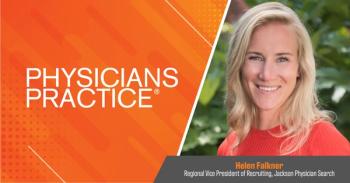
The monarch butterfly and medicine
Monarch butterfly migration teaches physicians how resilience, adaptability and long‑term vision can power sustainable, patient‑focused medical practices in today’s evolving healthcare landscape.
In past articles, we have looked to nature as an example of lessons applicable to healthcare. We have discussed the
The monarch butterflies' journey from caterpillar to butterfly and their long-distance migration offer valuable lessons for physicians and medical practices. These include the importance of long-term vision, adaptability, and resilience in the face of challenges and the need for partnerships and collaboration to achieve our goals of providing outstanding care for our patients.
Lessons from the monarch butterfly:
Focused on the goal or objective. Butterflies will travel great distances to mate and lay their eggs. Nothing gets in their way. No obstacles like wind or rain will deter a monarch butterfly from leaving the Southwestern U.S. to reach its mating ground in Mexico.
Physicians must focus on their mission to provide outstanding patient care. This means seeing patients on time, answering emails in a timely fashion, asking for feedback with patient surveys, monitoring our online reputation, staying abreast of new technologies and innovations, and having a staff motivated to provide stellar care for the patients in the practice.
Long-term vision and strategic thinking
Monarchs embark on a multi-generational migration spanning thousands of miles, demonstrating the need for long-term planning and strategic thinking in business. A successful practice must embark on strategic thinking, avoid stagnation, and not implement new ideas and care methods for patients. For example, AI is slowly making its way into healthcare. AI has been implemented into many medical practices and has reached a critical mass of utilization in healthcare. AI is now used in diagnostics, treatment delivery, patient management, precision medicine, robotic surgery, and drug development. Practices with a strategic plan are deciding how to embrace AI to help with administrative tasks, offer online scheduling and payment for our services, and even craft prior authorization letters, taking 4-6 hours of uncompensated time per physician per week.
Physicians must envision their organization's long-term health and move people and processes in that direction, even without immediate or visible payback.
Investing in sustainable practices or building strong relationships with referring physicians and hospitals is crucial for long-term success, even if the benefits are not immediately apparent.
Adaptability and resilience
The monarch butterfly's migration pattern demonstrates its remarkable ability to adapt to changing environmental conditions. Healthcare providers can learn from this and develop adaptable practices that respond effectively to evolving patient needs and healthcare policies.
The transformation from a monarch butterfly chrysalis to an adult. The butterfly is a remarkable metamorphosis where the caterpillar's body tissue breaks down and reforms into the butterfly's wings, legs, and other adult parts. The monarch's transformation within the chrysalis, from caterpillar to butterfly, symbolizes the need for adaptability and resilience in the face of change.
Practices must be agile and adapt to changing market conditions and patient needs. Healthcare providers can learn from this ability to be adaptable and develop practices that respond to evolving patient needs and healthcare policies.
Being able to pivot, embrace innovation, and learn from failures is essential for a medical practice's long-term survival and growth. After the national election in 2024, a small number of physicians or administrators were aware of the impact of tariffs on our practices. Most of us didn't plan on supply chain issues. We could not obtain supplies and medications produced outside of the United States. Few of us predicted that the cost of disposable gloves, masks, and sterile gowns would increase significantly. As a result, we must work with local suppliers or find other cost-saving methods of contending with the tariffs.
If we face another pandemic or a major emergency like the one experienced in 2020 and suddenly need to increase the number of IV bags, disposable gloves, or antibiotics, we could find ourselves in the same situation we experienced just a few years ago. We wouldn't be so vulnerable if we had brought production to the United States. We must plan and be prepared for worst-case scenarios.
Monarchs rely on a network of habitats and resources across a vast area, highlighting the importance of partnerships and collaboration. Building strong relationships with suppliers and other options can create a robust network supporting a medical practice's growth and success.
Collaborating with other physicians and businesses to address common challenges or opportunities can lead to innovative solutions and shared benefits. Physicians can join and consider bulk buying of supplies and medications. Volume buying is a method of controlling prices and requires collaboration and cooperation between multiple groups.
Monarch butterflies depend on specific plants, like milkweed, for survival, emphasizing the need for practices to invest in their own "habitat" and resources.
Practices must invest in their employees and new technology to create a supportive environment for growth and innovation. We believe in trickle-down care for our staff. If we take good care of our staff, including their mental health, they will take good care of our patients.
It is necessary to provide employees with opportunities for training and development. Just as physicians can't perform with antiquated treatments, our staff must develop new skills and embrace new technology such as AI. By investing in cutting-edge technology and fostering a positive work environment, practices avoid costly turnover. These are all examples of investing in the "habitat" of a successful practice.
Monarch butterfly populations are progressively declining. Efforts are being made to focus on conservation and sustainability to preserve the monarch butterfly's habitats. It is necessary to take responsibility for the butterfly's environmental impact.
Practices should strive to reduce their carbon footprint, conserve resources, and promote sustainable practices. Implementing energy-efficient technologies, using renewable energy sources, and reducing waste are all steps practices can take to contribute to a more sustainable future.
Consider the use of disposable instruments like cystoscopes and ureteroscopes. Due to their plastic content, disposable medical devices significantly contribute to environmental pollution. Efforts to recycle these items face hurdles, including technical challenges and, at present, low public participation in take-back programs.
Bottom Line: By embodying these lessons from the monarch butterfly, healthcare providers can develop flexible, resilient, and resourceful practices that adapt to the ever-changing healthcare landscape.
Neil Baum is Professor of Clinical Urology at Tulane Medical School in New Orleans, Louisiana
Dr. C.E. Carlton is emeritus chairman of the Department of Urology at Baylor College of Medicine
Newsletter
Optimize your practice with the Physicians Practice newsletter, offering management pearls, leadership tips, and business strategies tailored for practice administrators and physicians of any specialty.








